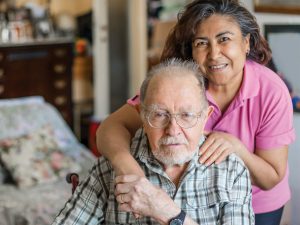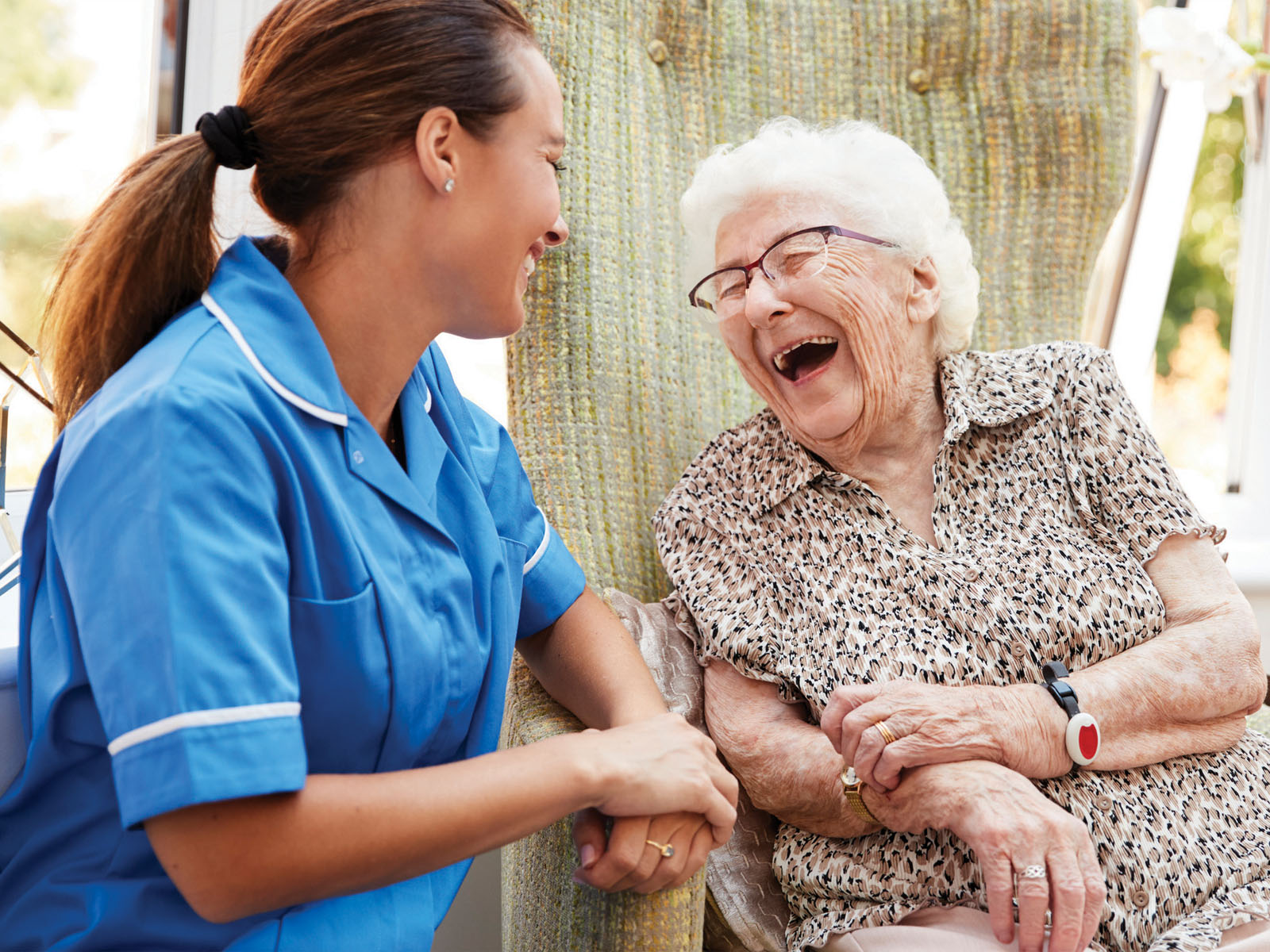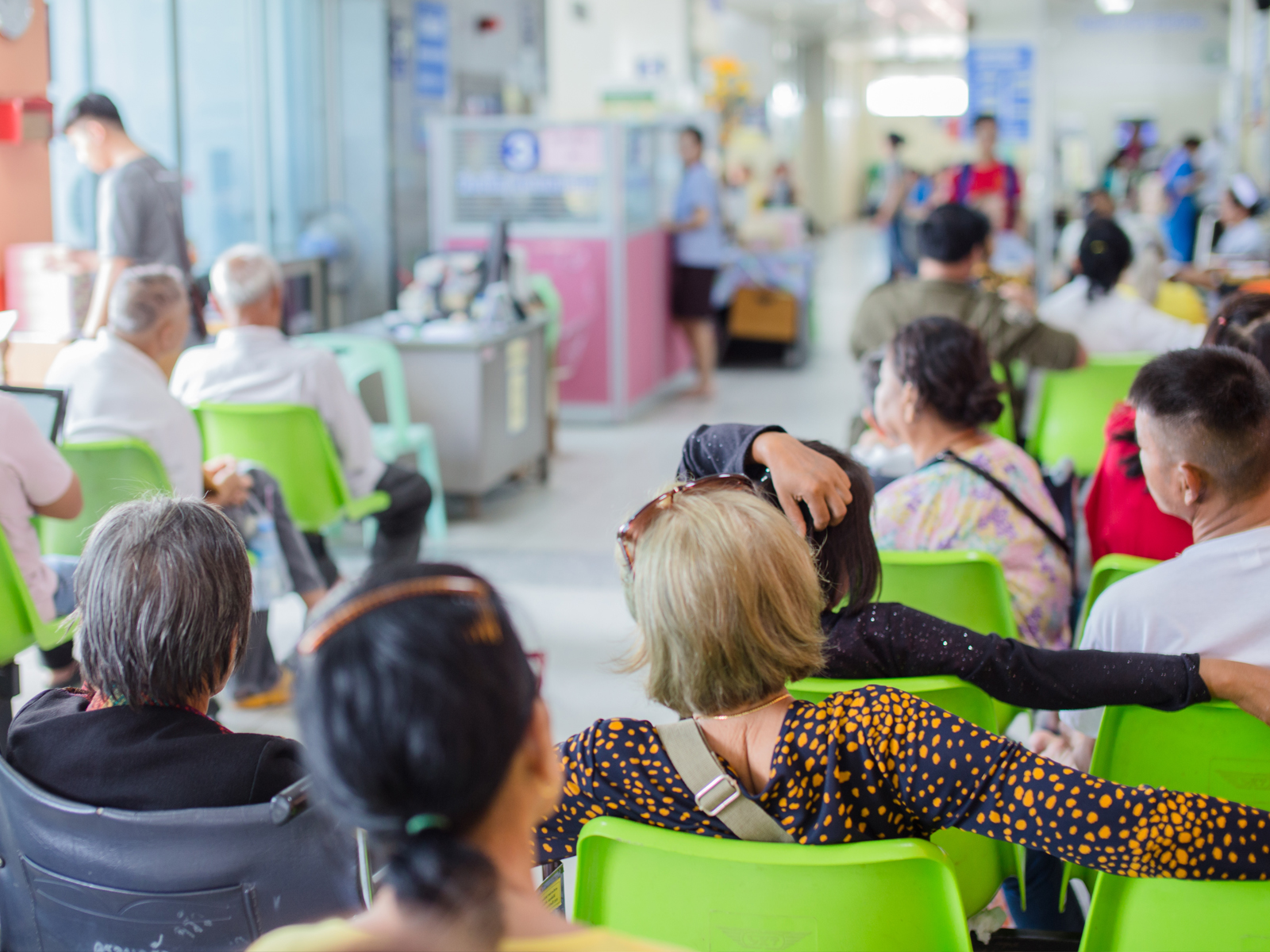By Karen Warner Schueler
When Jenny’s husband suffered a stroke two years ago, Jenny joined a caregiver support group at the local hospital. “Before COVID-19 hit,” she said, “I met with the support group, live and in person, a couple times a month. It was a lifeline, the only place I could go where I could speak my truth, my fear, my anger, my sadness out loud and know that everyone in the group understood and would not judge. With COVID-19, those meetings take place over Zoom now.”
“My life as a caregiver is more stressful than ever. Our grown kids are back home, sheltering in place. My husband is also just in the other room, so there’s no way I can share as openly as I used to with the group. Add to that all my other fears, like running to the grocery store and bringing back COVID-19, or losing my job because my time away from my desk tending to my husband’s needs is greater, and you’ll understand the fragility of my situation.”
As we head into year two of the global pandemic, COVID-19 continues to intensify the workload while eliminating many of the avenues of relief for family caregivers. In the most recent Global CarersTM study from Merck, family caregivers consistently reported the additional negative impacts of COVID-19, such as greater hours, compared to those not providing care.
Changing the frame
Is it possible now and in the future to write a different story for yourself – when so much is out of your control? The fact is that you are the greatest asset. And, you can’t take care of someone else if you don’t first take care of yourself so cultivating resilience is critical to getting through times like this.
Like a photographer who sets up a candid shot, every frame contains the possibility for something beautiful and something undesirable, for both the photogenic and the unsightly. Just as a good photographer will reframe the shot to emphasize what he or she thinks you should focus on, resilient people acknowledge the negative, then focus on what’s good, what’s possible.
Bouncing better
From the Latin re meaning “back,” to, salire meaning “to jump,” resilience means not just bouncing back, but bouncing better. We are challenged by an adverse event, to rise to meet the challenge, and in so meeting it, become stronger. That strength increases our capacity to handle difficulties in the future.
However, a caregiver can’t be expected to make the leap from feeling defeated and depleted to feeling resilient and renewed overnight. So, just how do you build on your intentions to practice resilience? Here are five prompts that I’ve adapted for caregivers from the work of Gloria H. M. Park, director of performance psychology at The Consortium for Health and Military Performance.
• Half-full or half-empty? Caregivers spend so much time dealing with crises that they develop a watchful, glass-half-empty habit. Once you catch yourself at half-empty thinking, you can choose to reframe what’s happening around you. Especially notice when your negative thinking is unproductive. For example, “With everyone here and working from home, I’ve given up on privacy,” versus “How can I make sure I have some quiet time every day to catch my breath and regroup?”
• Threat or opportunity? As mortals, we constantly scan the landscape for threats, a behaviour leftover from our days as cave dwellers. Caregiving tends to elevate your threat-seeking powers; so when we go looking for threats we often find them. We can also choose to look for the opportunities in a threatening situation. What good things might you learn about yourself or others through this challenge? How can the circumstance give you new pathways to experience things you couldn’t before? For a caregiver during COVID-19 that might equate to, “On one hand, I can’t travel for work like I used to, but then again, it’s nice to be home and grab lunch with the kids.”
• Obligation or privilege? If you’re someone’s primary caregiver, you are obligated to a host of activities that you would not otherwise choose. These obligations hold hidden gifts for caregivers. By shifting “I have to” to “I get to” you can subtly shift your motivation and your mood. For example, “I have to spend time and money on technology just to make sure we can do Dad’s telehealth appointments” versus “I get to be at Dad’s side to capture what the doctor says, and we don’t even need to leave the house.”

• In or out of your control? Much of caregiving is unplannable. Instead of obsessing about the unknowns, focus on one small productive thing you have control over. Some of mine: start a gratitude journal, declutter a closet, do my taxes (yes, really!), knit a scarf. It doesn’t have to be glamourous, just take satisfaction in the doing and the completing.
• Me or we? As my mother used to say, “Everyone is going through something.” Performing acts of kindness for others not only makes them happier, but it also makes you happier. Everyone around us—non-caregivers included—is having their own challenges during COVID-19. In fact, caregivers might be more prepared for the constraints of COVID-19 than non-caregivers. Look outside yourself. How are others struggling?”
Reframe the good
We may not be able to choose the course of our loved one’s disease let alone the course of COVID-19, but we do have the human capacity to choose resilience over defeat, optimism over pessimism, support over isolation. We can learn to reframe the good, even in a relentlessly
bad situation. And, even better, research shows that if you build an intentional practice of resilience into your caregiving, not only will you benefit, but so will the person in your care.
Karen Warner Schueler, MAPP, is an executive coach and president of Tangible Group, and author of The Sudden Caregiver.
www.TheSuddenCaregiver.com.













